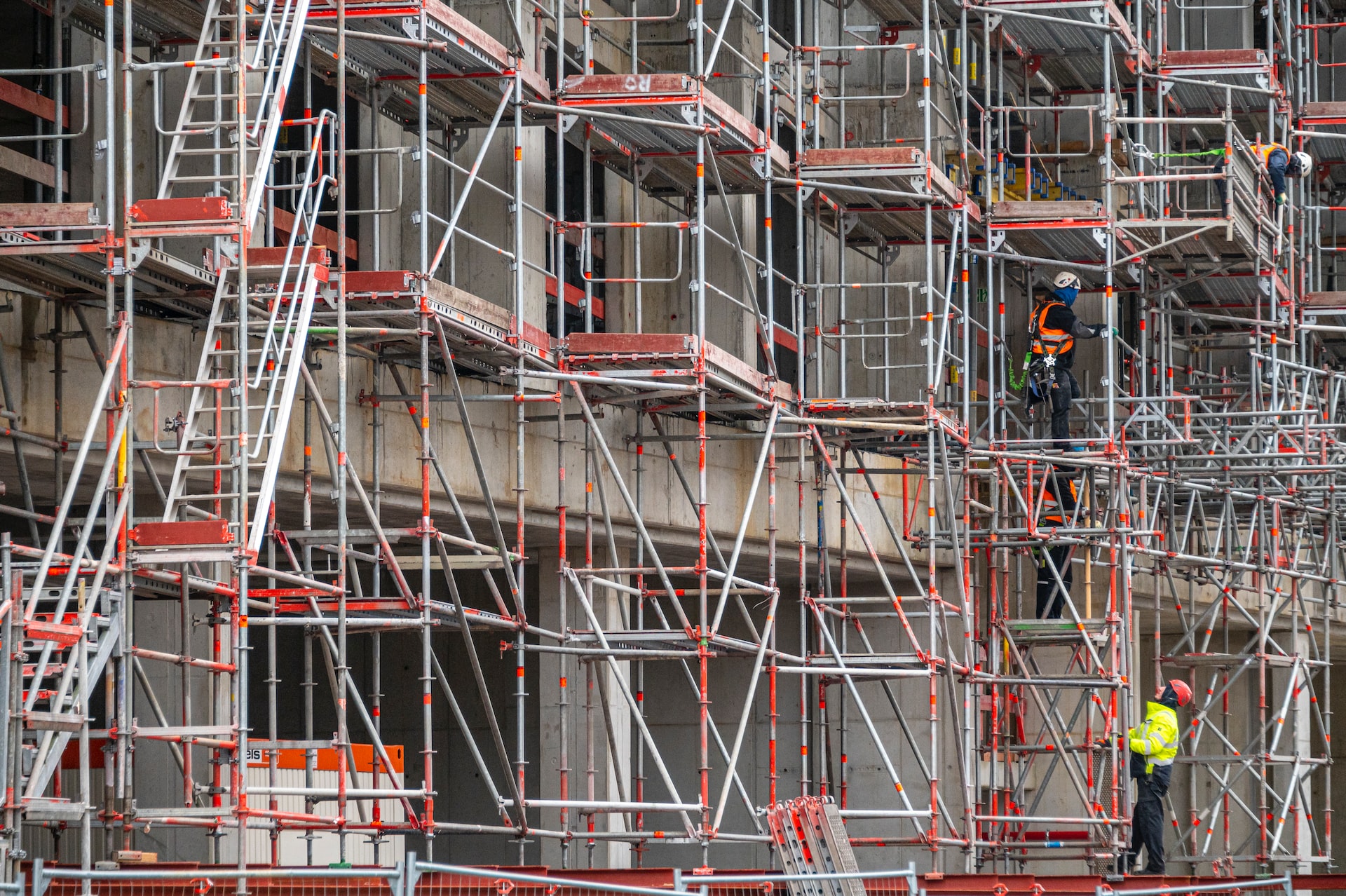Get the Best Scaffolding Cobham Services for Your Building Projects
Get the Best Scaffolding Cobham Services for Your Building Projects
Blog Article
Exploring the Numerous Kinds of Scaffolding Utilized in Building Tasks
The construction industry counts heavily on different sorts of scaffolding to satisfy certain task needs, each offering distinctive benefits and applications. Conventional frame scaffolding gives a durable foundation for general jobs, while suspended scaffolding is crucial for service high-rise structures. Other choices, such as system and rolling scaffolding, satisfy effectiveness and mobility, respectively. Furthermore, the cantilever alternative shows important in city atmospheres where space is constricted. Recognizing the nuances of these scaffolding kinds is vital for maximizing security and performance on construction sites, motivating a closer exam of their unique qualities and applications.

Traditional Framework Scaffolding
Conventional framework scaffolding is just one of the most extensively used techniques in the building and construction industry as a result of its toughness and flexibility. This system includes upright and straight structures that are constructed to create a secure system for products and workers. The major elements consist of upright blog posts, straight ledgers, and diagonal braces, which with each other supply a solid structure that can sustain substantial tons.
One of the essential benefits of traditional frame scaffolding is its adaptability to various construction tasks, ranging from household structures to big commercial structures. The modular style permits easy assembly and disassembly, making it efficient for both short-term and long-lasting projects. Additionally, the system can be customized in elevation and size, suiting different structure designs and site problems.
Safety and security is critical in scaffolding applications, and typical framework systems are geared up with guardrails and toe boards to avoid drops and ensure employee security. Additionally, routine evaluations and adherence to safety laws are vital in keeping the integrity of the scaffold. Generally, standard structure scaffolding stays an essential selection in the construction sector, giving a reputable system for labor and boosting total project effectiveness

Suspended Scaffolding
Put on hold scaffolding supplies a distinct service for building tasks that need access to elevated surfaces, particularly in situations where traditional frame scaffolding might be unwise. This sort of scaffolding is typically put on hold from the roofing system or upper levels of a framework, using a system of ropes, sheaves, and platforms to create a working area that can be adjusted to various heights.
One of the primary advantages of suspended scaffolding is its flexibility. It can be quickly rearranged or lowered to accommodate modifications in building and construction needs, making it ideal for tasks such as window installation, façade job, and upkeep on skyscrapers. In addition, the very little footprint of put on hold scaffolding permits far better usage of ground area in metropolitan atmospheres, where space is often restricted.
Safety is an important consideration in making use of suspended scaffolding. Correct rigging and anchoring systems must be employed to ensure stability and stop accidents. Operators must additionally be educated in the risk-free use of this tools. Generally, put on hold scaffolding gives a reliable and efficient solution for accessing hard-to-reach locations in numerous building and construction scenarios, boosting both efficiency and security on website.
System Scaffolding
System scaffolding, usually considered as a modern option in the scaffolding sector, consists of pre-engineered components that can be rapidly set up and adjusted for numerous building and construction jobs. Scaffolding. This kind of scaffolding is identified by its modular layout, which permits for versatility and effectiveness on work websites, suiting structural demands and this page different heights
Typically made from high-strength steel or aluminum, system scaffolding offers enhanced toughness and security. The elements consist of vertical posts, straight journals, and diagonal braces, which interconnect firmly, ensuring a durable framework. The design frequently incorporates standardized fittings, simplifying setting up and disassembly procedures, thus decreasing labor time and costs.

Rolling Scaffolding
Rolling scaffolding is a functional choice to conventional fixed scaffolding, created for wheelchair and simplicity of use on building and construction websites. This kind of scaffolding is composed of a system supported by structures with wheels, allowing employees to quickly move it as required. The mobility feature considerably enhances productivity, as it decreases downtime related to putting together and taking apart dealt with scaffolding.
Usually built from lightweight materials such as light weight aluminum or steel, rolling scaffolding provides a sturdy yet portable service for projects needing regular repositioning - Scaffolding. It is specifically beneficial in tasks such as painting, drywall installment, and electric work, where access to numerous elevations and areas is necessary
Safety and security is vital in rolling scaffolding design, with features such as locking wheels to stop unplanned movement when in use, and guardrails to safeguard workers from falls. In addition, several versions are adjustable in elevation, suiting various task needs.
Cantilever Scaffolding

The design of cantilever scaffolding generally includes making use of braces or arms secured to a structure or structure, enabling the system to expand outward check here securely. Safety and security is paramount; thus, these scaffolds need to be crafted to endure various loads and ecological conditions. Routine inspection and upkeep are crucial to ensure structural integrity and employee safety and security.
Cantilever scaffolding is preferred for its flexibility and efficient use of room, making it a prominent choice in urban environments where room scaffold examples constraints are common. Moreover, it assists in simpler access to high altitudes, inevitably adding to the overall effectiveness of building tasks. Similar to all scaffolding kinds, proper training and adherence to safety standards are crucial for employees utilizing cantilever scaffolding.
Verdict
Typical structure scaffolding gives stability, while put on hold scaffolding supplies adaptability for raised tasks. System scaffolding facilitates quick assembly, and rolling scaffolding boosts wheelchair for differing work environments.
Typical structure scaffolding supplies a sturdy structure for basic tasks, while suspended scaffolding is important for work on skyscraper structures.Rolling scaffolding is a functional option to traditional fixed scaffolding, created for movement and convenience of usage on building websites. As with all scaffolding types, appropriate training and adherence to safety criteria are essential for workers utilizing cantilever scaffolding.
Standard framework scaffolding provides security, while suspended scaffolding uses adaptability for elevated jobs. System scaffolding facilitates fast setting up, and rolling scaffolding boosts movement for varying work settings.
Report this page